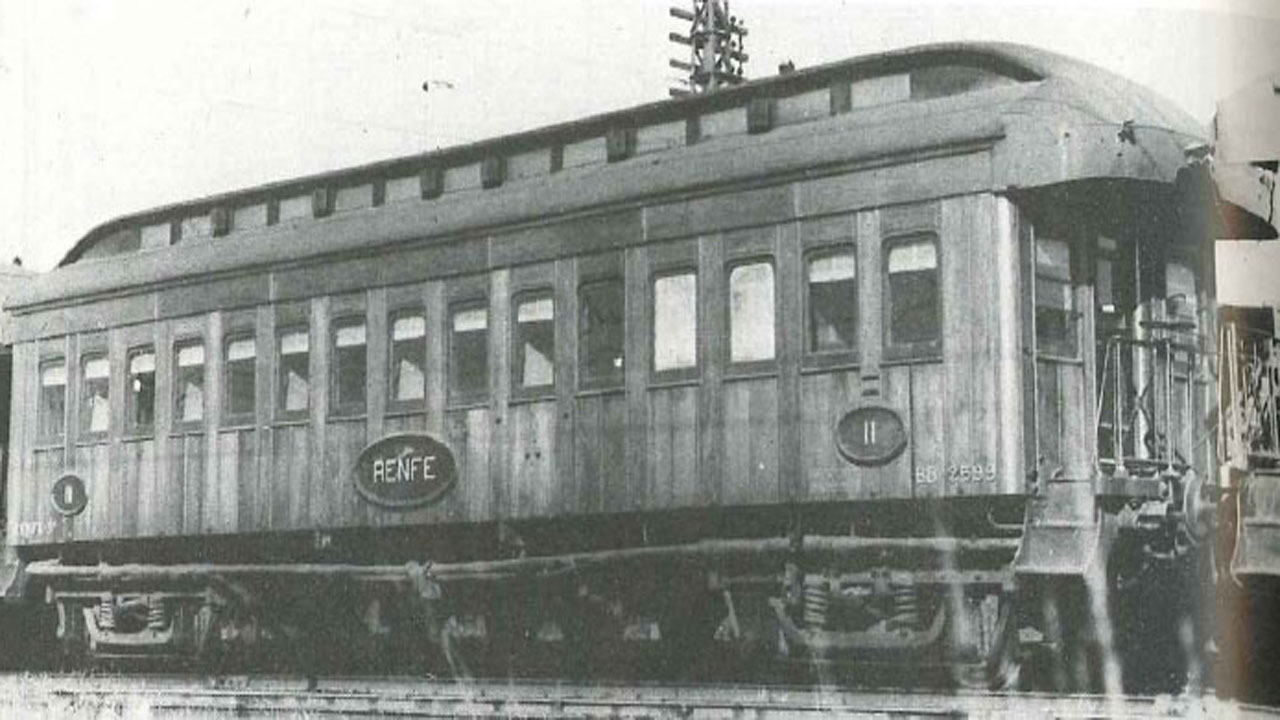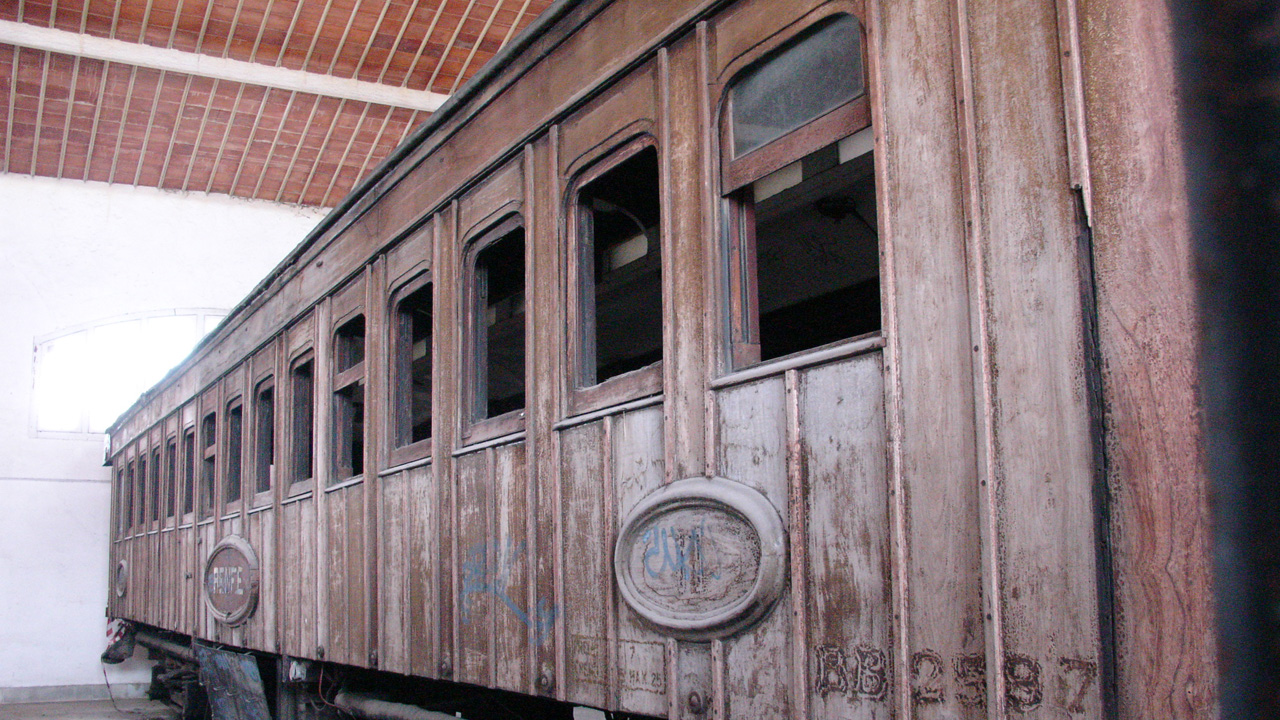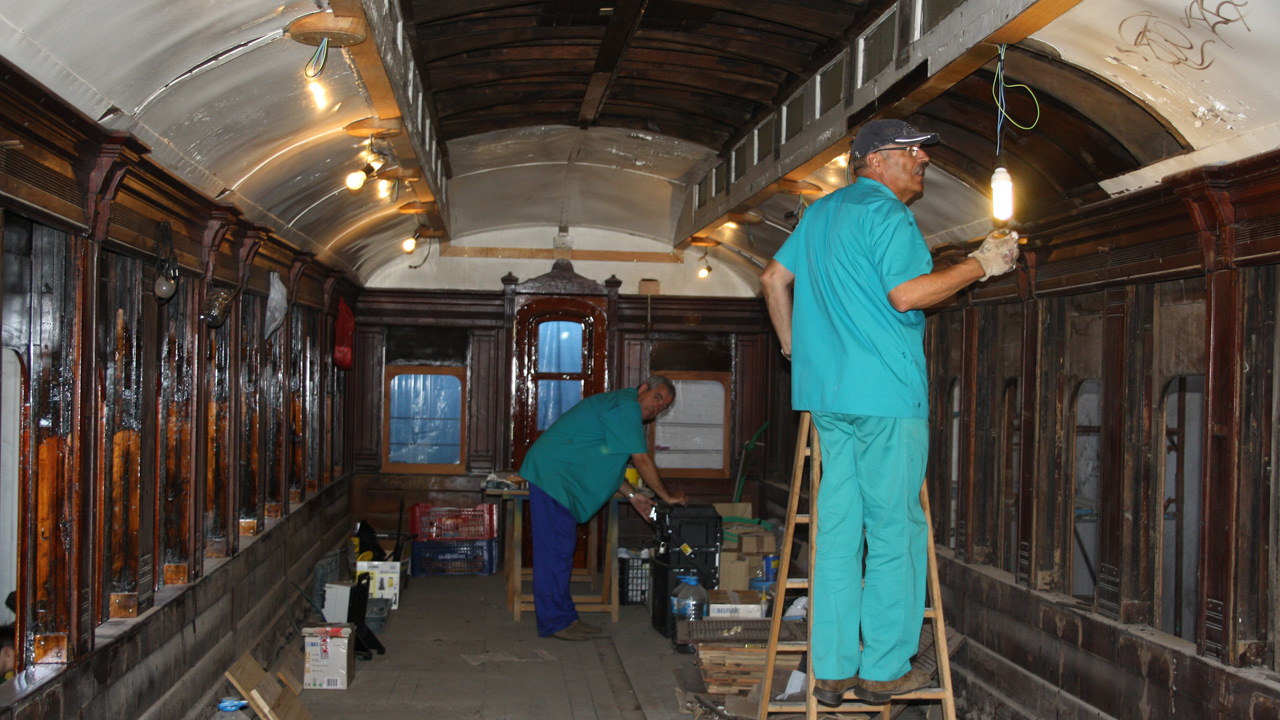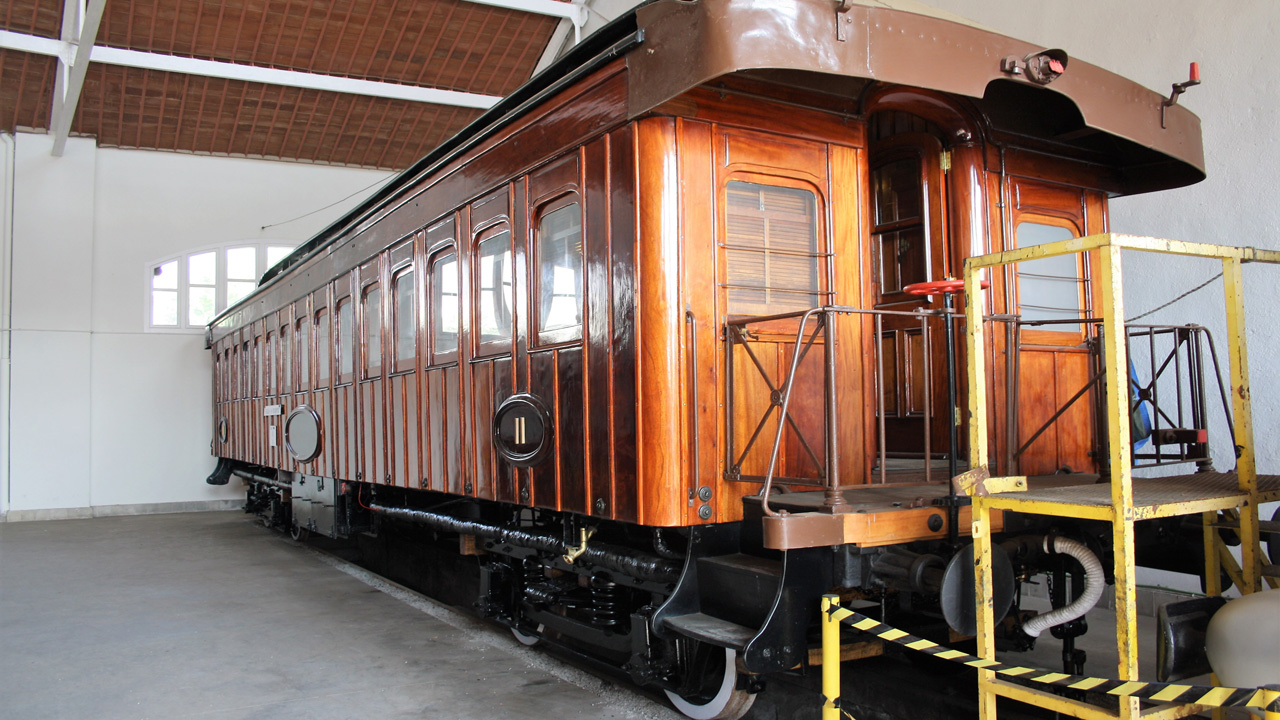
"Harlan Gumà" car in detail from the manufacturer, 19th century

"Harlan" car, first half 20th century

Original interior of a "Harlan" car

"Harlan" car composition at the exit of the Barcelona´s Francia Station

Start of restoration, 2008

Restoration, 2010

Restoration, 2011

Restoration, 2013

End of restoration, 2016

Restoration of the "Harlan" bogie, 2012

Detail of the "Harlan" bogie from the inspection pit
10 - "Harlan" car
The so-called “Harlan” car stands out in the collection,
being a lot bigger, with a more modern appearance, than the
third-class one occupying the first track of the Rotonda
(Roundhouse), although it is actually the oldest and most
valuable of them all. It was built in the United States,
using tropical wood, in 1878 for the Valls to Villanueva and
Barcelona Railway. When it arrived in Vilanova i la Geltrú
in 1881, from the other side of the ocean, it was the most
advanced and comfortable train in all Europe. It was built
on two wooden bogies, which made the trip a lot more
comfortable. These vehicles were purchased due to the
interest of the railway company’s director, Francesc Gumà,
in improving travelling conditions for passengers in an
itinerary that he planned to extend as far as Madrid.
It included another outstanding innovation that was also
unknown in Europe: an automatic air brake. Thanks to this
system, if a vehicle became uncoupled due to the coupler
breaking, which happened quite frequently, the entire train
would immediately stop, thereby avoiding many accidents.
This type of brake was not introduced into European railways
until the early 20th century. Moreover, the car interior
features levels of comfort unknown to the Europe of that
time, such as bidirectional seats.
The “Harlan” cars had a very long life and were still
running in Catalonia up to 1972; in their last period, they
were used in the Mataró commuter service. They were
gradually withdrawn from circulation when electric
locomotives replaced steam engines, since their greater
power deformed the car’s wooden structure.
The Museum’s Association of Volunteers (SiC) took care of
its restoration in a large-scale intervention that lasted
eight years. Its interior features a display detailing its
history and restoration process.


